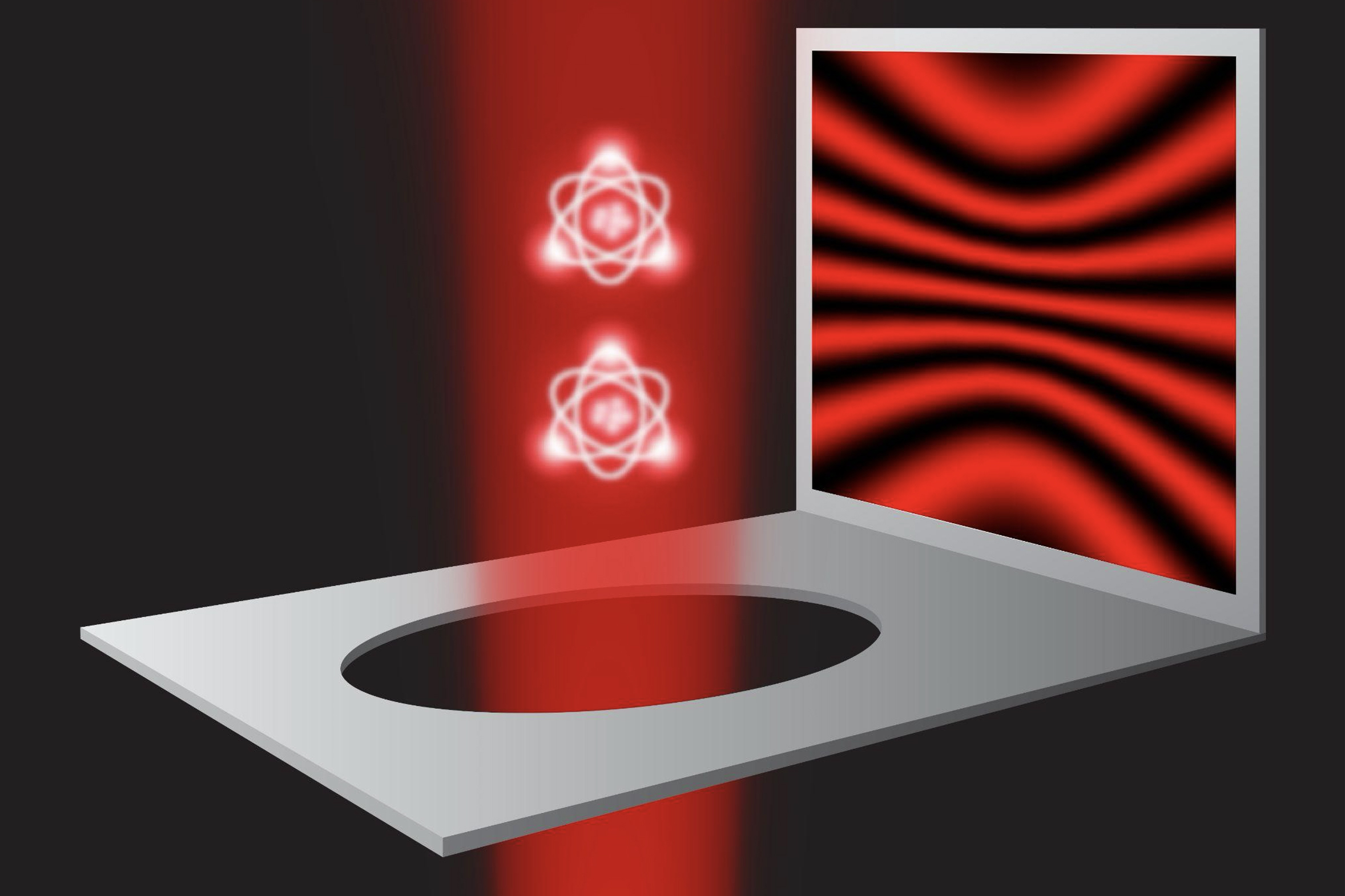Science
MIT Physicists Reinvent Double-Slit Experiment, Challenge Einstein

Physicists at the Massachusetts Institute of Technology (MIT) have conducted a groundbreaking version of the famed double-slit experiment, offering new insights into the nature of light. Their research not only confirms aspects of quantum theory but also challenges long-held beliefs attributed to Albert Einstein. The findings are detailed in the journal Physical Review Letters.
The double-slit experiment, first performed by British scholar Thomas Young in 1801, demonstrated light’s wave-like behavior. It has since evolved into a fundamental illustration of quantum mechanics, depicting light as both a particle and a wave. The essence of this phenomenon lies in the fact that observing light as particles obscures its wave nature, creating a paradox that has perplexed scientists for centuries.
In their latest experiment, the MIT team, led by Wolfgang Ketterle, employed individual atoms as slits and weak beams of light to scatter photons. By manipulating the quantum states of these atoms, researchers were able to explore how much information was revealed about the photons’ paths. They confirmed the predictions of quantum theory, demonstrating that increased knowledge about the particle-like nature of light resulted in diminished visibility of the interference pattern, a key indicator of its wave-like behavior.
The study revisits a debate dating back to 1927, when Einstein posited that a photon should pass through only one slit, exerting a measurable force, akin to a bird stirring a leaf. In contrast, physicist Niels Bohr argued that capturing the photon’s path would eliminate the interference pattern, validating quantum uncertainty.
Ketterle’s recent work represents the most idealized version of the double-slit experiment to date. By cooling over 10,000 atoms to microkelvin temperatures, the team created a crystal-like lattice configuration that allowed them to observe single photons interacting with these isolated atoms.
The experimentation process involved using laser beams to arrange the atoms so that they could be treated as individual entities. This configuration enabled the scientists to shine weak light through the atoms and observe how each photon scattered, providing insights into its wave or particle characteristics.
Their innovative approach included adjusting the “fuzziness” of the atoms, which influenced how likely a photon would exhibit wave-like versus particle-like behavior. When the atoms were held more loosely, they recorded the path of the photons, confirming that the degree of fuzziness directly affected the observed interference pattern.
In a significant twist, the research also validated the idea that the “spring” effect, used in previous experiments to describe photon behavior, was not essential. By momentarily releasing the atoms from their laser confinement, the team found that the same duality of wave and particle nature remained intact, underscoring the role of quantum correlations rather than mechanical constraints.
The findings come at a timely moment, as 2025 has been designated by the United Nations as the International Year of Quantum Science and Technology, marking the centenary of quantum mechanics. Co-author Yoo Kyung Lee noted the relevance of their work in clarifying historical debates between Bohr and Einstein during this significant year.
This research was supported by the National Science Foundation, the U.S. Department of Defense, and the Gordon and Betty Moore Foundation. The team’s efforts not only advance the understanding of quantum mechanics but also highlight the ongoing relevance of classical debates in modern physics, further enriching the dialogue surrounding light’s enigmatic nature.
-

 Lifestyle5 months ago
Lifestyle5 months agoLibraries Challenge Rising E-Book Costs Amid Growing Demand
-

 Sports5 months ago
Sports5 months agoTyreek Hill Responds to Tua Tagovailoa’s Comments on Team Dynamics
-

 Sports5 months ago
Sports5 months agoLiverpool Secures Agreement to Sign Young Striker Will Wright
-

 Lifestyle5 months ago
Lifestyle5 months agoSave Your Split Tomatoes: Expert Tips for Gardeners
-

 Lifestyle5 months ago
Lifestyle5 months agoPrincess Beatrice’s Daughter Athena Joins Siblings at London Parade
-

 Science4 months ago
Science4 months agoSan Francisco Hosts Unique Contest to Identify “Performative Males”
-

 World5 months ago
World5 months agoWinter Storms Lash New South Wales with Snow, Flood Risks
-

 Science5 months ago
Science5 months agoTrump Administration Moves to Repeal Key Climate Regulation
-

 Business5 months ago
Business5 months agoSoFi Technologies Shares Slip 2% Following Insider Stock Sale
-

 Science5 months ago
Science5 months agoNew Tool Reveals Link Between Horse Coat Condition and Parasites
-

 Sports5 months ago
Sports5 months agoElon Musk Sculpture Travels From Utah to Yosemite National Park
-

 Science5 months ago
Science5 months agoNew Study Confirms Humans Transported Stonehenge Bluestones









